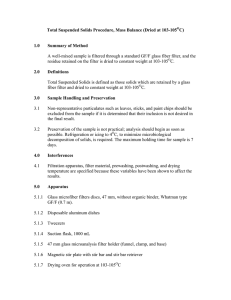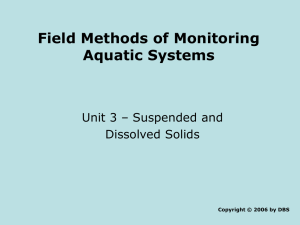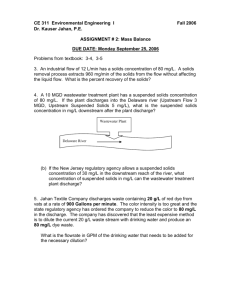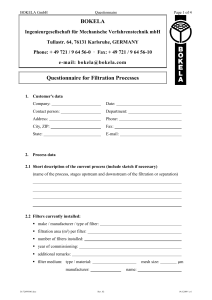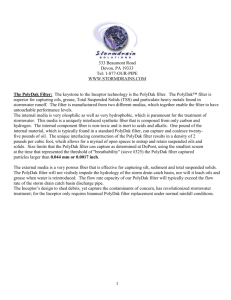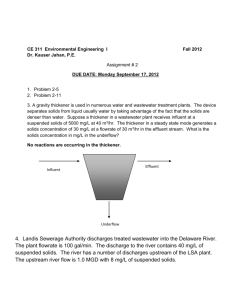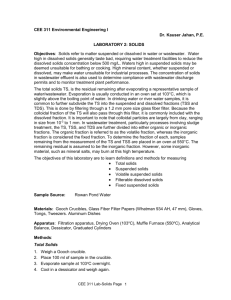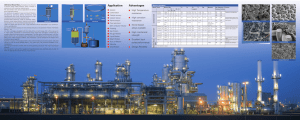TSS Wastewater Testing Lab Procedure
advertisement
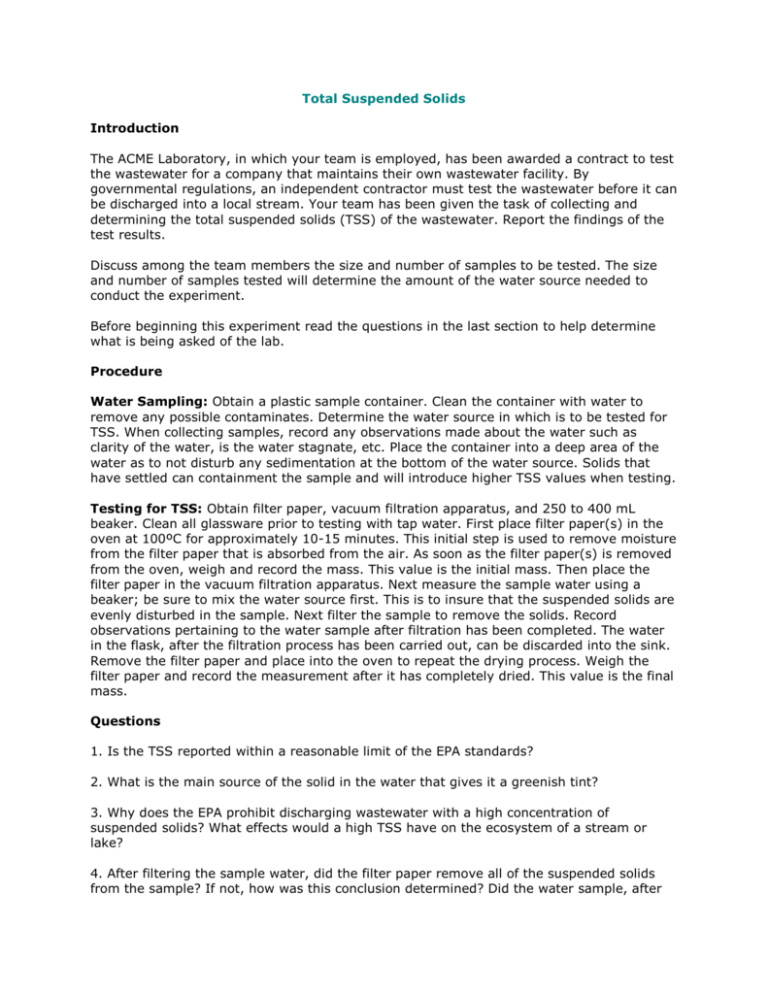
Total Suspended Solids Introduction The ACME Laboratory, in which your team is employed, has been awarded a contract to test the wastewater for a company that maintains their own wastewater facility. By governmental regulations, an independent contractor must test the wastewater before it can be discharged into a local stream. Your team has been given the task of collecting and determining the total suspended solids (TSS) of the wastewater. Report the findings of the test results. Discuss among the team members the size and number of samples to be tested. The size and number of samples tested will determine the amount of the water source needed to conduct the experiment. Before beginning this experiment read the questions in the last section to help determine what is being asked of the lab. Procedure Water Sampling: Obtain a plastic sample container. Clean the container with water to remove any possible contaminates. Determine the water source in which is to be tested for TSS. When collecting samples, record any observations made about the water such as clarity of the water, is the water stagnate, etc. Place the container into a deep area of the water as to not disturb any sedimentation at the bottom of the water source. Solids that have settled can containment the sample and will introduce higher TSS values when testing. Testing for TSS: Obtain filter paper, vacuum filtration apparatus, and 250 to 400 mL beaker. Clean all glassware prior to testing with tap water. First place filter paper(s) in the oven at 100ºC for approximately 10-15 minutes. This initial step is used to remove moisture from the filter paper that is absorbed from the air. As soon as the filter paper(s) is removed from the oven, weigh and record the mass. This value is the initial mass. Then place the filter paper in the vacuum filtration apparatus. Next measure the sample water using a beaker; be sure to mix the water source first. This is to insure that the suspended solids are evenly disturbed in the sample. Next filter the sample to remove the solids. Record observations pertaining to the water sample after filtration has been completed. The water in the flask, after the filtration process has been carried out, can be discarded into the sink. Remove the filter paper and place into the oven to repeat the drying process. Weigh the filter paper and record the measurement after it has completely dried. This value is the final mass. Questions 1. Is the TSS reported within a reasonable limit of the EPA standards? 2. What is the main source of the solid in the water that gives it a greenish tint? 3. Why does the EPA prohibit discharging wastewater with a high concentration of suspended solids? What effects would a high TSS have on the ecosystem of a stream or lake? 4. After filtering the sample water, did the filter paper remove all of the suspended solids from the sample? If not, how was this conclusion determined? Did the water sample, after filtration, consists of clear or cloudy water? 5. If the sample water was cloudy or tinted after the filtration procedure was completed, what are the sizes of the particles that remain? (HINT…what was the size of the pores in the filter paper used during the experiment.) 6. What materials could be used in a filtration system to remove all of the suspended solids? (HINT…swimming pool, fish aquarium, etc.)
